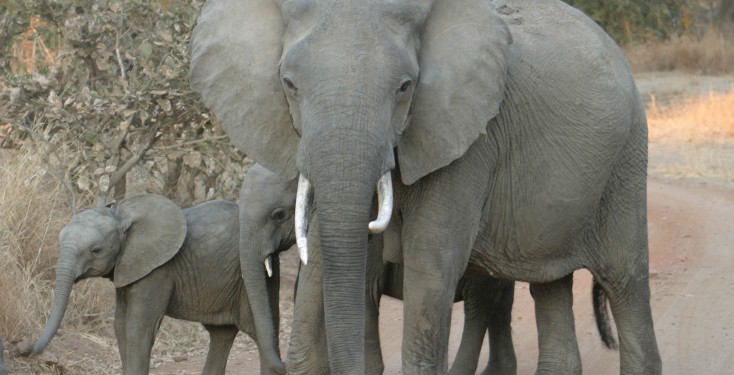The Mary Chipperfield Trial: background
Day by day at the trial that shook the circus world.

In January Mary Cawley (nee Chipperfield) and her husband were convicted on twelve and one count of cruelty respectively.
Publicity surrounding the case has probably changed people’s perceptions of animals in circuses forever and two of the most significant people in the performing animal industry now have cruelty convictions to their name.
But perhaps what is most significant about the case is what the Cawleys were NOT convicted of. It was never disputed that the Cawleys hit elephants, camels and other animals with various weapons – they are allowed to. The case has highlighted more than anything the failure of the law to protect performing animals. And when the Cawleys were fined, the complete failure of those fines to reflect the vast sums the Cawleys have earned from the animals they beat.
Here we take you behind the newspaper headlines for a day by day look at the trial which has shown why animals in circuses must be banned.
BACKGROUND
From late 1996 to early 1998, the Animal Defenders undertook the most detailed study ever of animals in circuses. AD Field Officers studied thirteen UK touring circuses including three permanent quarters, and five foreign circuses showing UK animals. We filmed, photographed and made detailed notes of what we saw.
From October 1997 to late January 1998, two Field Officers worked at Mary Chipperfield Promotions in Hampshire where a horrendous picture of violence towards animals unfolded. Video evidence collected by the ADs became the basis for charges against Mary Chipperfield, her husband Roger Cawley, and their elephant keeper Michael Stephen Gills.
In late December, with video evidence mounting to hundreds of hours, the ADs began to take legal advice on certain incidents.
In mid January the investigation was halted. A week later the findings were publicised, even though hundreds of hours of video footage were still unviewed. But disaster struck, legal action was delayed because the ADs’ barrister contracted meningitis.
In the storm of publicity, the police became interested in the case and the ADs began to work with them alongside our own legal team; providing video footage, photographs, statements and details of expert witnesses to contact. As a precaution, we kept the private prosecution option open. In March the police, acting on our evidence charged elephant keeper Stephen Gills with six offences.
Not satisfied with the way the Crown case was running, in April the ADs obtained a total of 49 summonses against Mary Cawley, Roger Cawley, Stephen Gills and the company Mary Chipperfield Promotions Ltd. Two days later, the police issued 15 charges against Mary Cawley, effectively duplicating our own.
In July, the ADs were granted a further 9 summonses against Mary Chipperfield Promotions and its directors relating to permitting suffering, failure to protect the elephants and, in an historic move to test the 1911 Protection of Animal Act, excessive shackling and environmental deprivation involving three elephants.
The Crown Prosecution Service (CPS) then took over charges brought by the ADs – promptly dropping a large number, including, significantly, the charges against the company, Mary Chipperfield Promotions Ltd, (which owned the animals). The ADs had taken a Queen’s Council’s opinion on whether our summonses could proceed under CPS guidelines, and on how the case should be constructed. In their arrogance, the CPS refused all offers of help on an extremely complicated case with hundreds of hours of video evidence.
Core to the evidence presented by the ADs were eight Court Tapes (CTs). These were edited highlights of some 700 hours of footage taken by the ADs at Mary Chipperfield Promotions Ltd. Just to give an idea of how much this is – if you were to watch the footage solidly, from nine to five every day, with no breaks, it would take you over six weeks!
Court Tapes 1-5 were a tape per month for October, November, December and two tapes for January featuring violence taking place at the farm – a staggering 157 incidents. Court Tape 6 included video extracts in which AD Field Officers informed Mary Cawley of animal abuse and the action (or lack of it) taken. CT7 related to the chaining of elephants. Roger Cawley was shown on two occasions instructing Stephen Gills to leave the elephants chained all day. The ADs also had full video coverage for certain days when the elephants were left chained all day. CT8 referred to the chain of command at the farm – the key to who was accountable. Despite requests from the ADs, Roger Cawley and other staff were not questioned by the police.
In order to strengthen the case, the ADs gathered further experts to support the charges – in addition to those recommended to the police. Our thanks to animal behaviourist Roger Mugford and vet Samantha Lindley for their assistance.
Gills pleaded guilty to all charges against him and was jailed in November for four months and banned from working with animals for five years. Charges against Gills relating to an incident in which he beat a chicken to death against a brick wall were dropped, apparently to minimise charges.
Mary Chipperfield Cawley and Roger Cawley pleaded not guilty on all counts.
